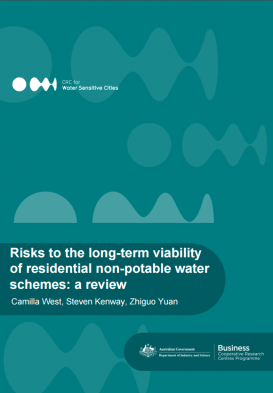Risks to the long-term viability of residential non-potable water schemes: a review
Abstract
Progression towards sustainable urban water management in Australia has seen a reduction in potable water demand through the introduction of water conservation measures, the diversification of water supply sources and the use of fit-for-purpose water supplies (Chong et al., 2009). Residential non-potable water schemes have been implemented in response to water supply security concerns, constrained centralised infrastructure and increased environmental degradation (Burn et al., 2012, Davis and Farrelly, 2009, Myers et al., 2013, Leonard et al., 2013).
